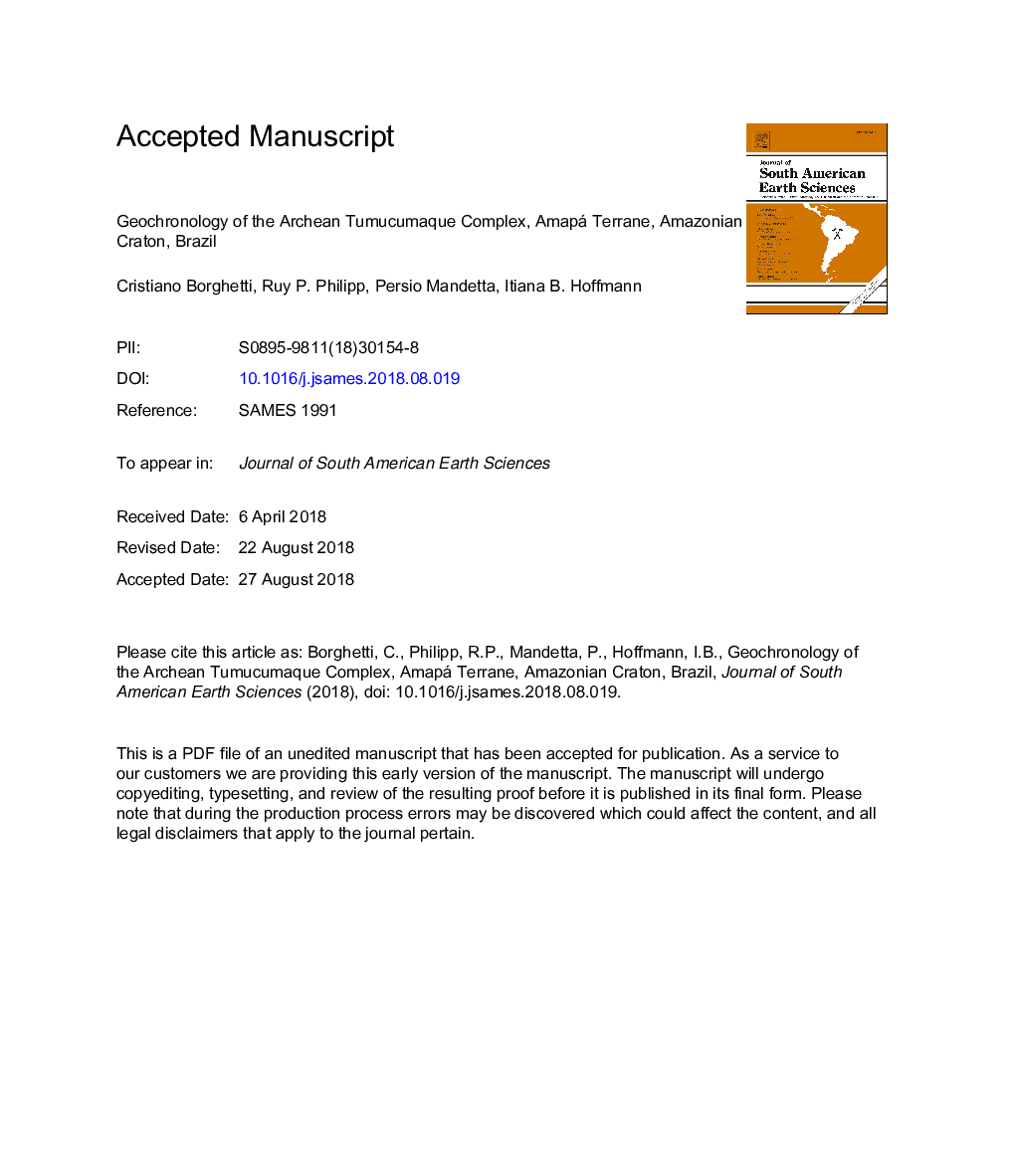| Article ID | Journal | Published Year | Pages | File Type |
|---|---|---|---|---|
| 10119918 | Journal of South American Earth Sciences | 2018 | 62 Pages |
Abstract
U-Pb and Lu-Hf isotopic studies were performed in igneous zircon crystals from orthogneisses, metagranodiorites and a gabbro of the Tumucumaque Complex, in Vila Nova region, south of Amapá state, Brazil. The complex is located in the southeastern region of the Guyana Shield, northeastern portion of the Amazonian Craton. The Tumucumaque Complex is represented by tonalitic to granodioritic gneisses and amphibolites, with subordinate metagranites and intrusive gabbros, metamorphosed in conditions of middle to Upper Amphibolite facies. The complex represent the basement of the metavolcano-sedimentary associations of the Vila Nova and Serra do Navio regions, and occur as NW-SE elongated domes. The contact of infra- and supracrustal rocks is defined by N45°-55°W-trending high-angle ductile shear zones. In this contribution we provide U-Pb zircon ages by LA-MC-ICPMS which attest for the presence of a broad area of Archean rocks in the Guyana Shield. In addition, we present stratigraphic relationships and structural data between the Tumucumaque Complex and the Rhyacian Vila Nova Greenstone Belt. The orthogneisses yielded zircon igneous ages of 2.851â¯Â±â¯37â¯Ma and 2.852â¯Â±â¯32â¯Ma and the metagranodiorites of 2.822â¯Â±â¯33â¯Ma and 2.812â¯Â±â¯17â¯Ma. Intrusive gabbro present age of 2.671â¯Â±â¯46â¯Ma. The Lu-Hf data suggest an enriched mantle source and reworking of Paleo-archean crustal rocks. The results obtained suggest a magmatic orogenic episode during the Meso-archean (2.85-2.81â¯Ga) and a later Neo-archean (2.67â¯Ga) event, probably anorogenic.
Related Topics
Physical Sciences and Engineering
Earth and Planetary Sciences
Earth and Planetary Sciences (General)
Authors
Cristiano Borghetti, Ruy P. Philipp, Persio Mandetta, Itiana B. Hoffmann,
